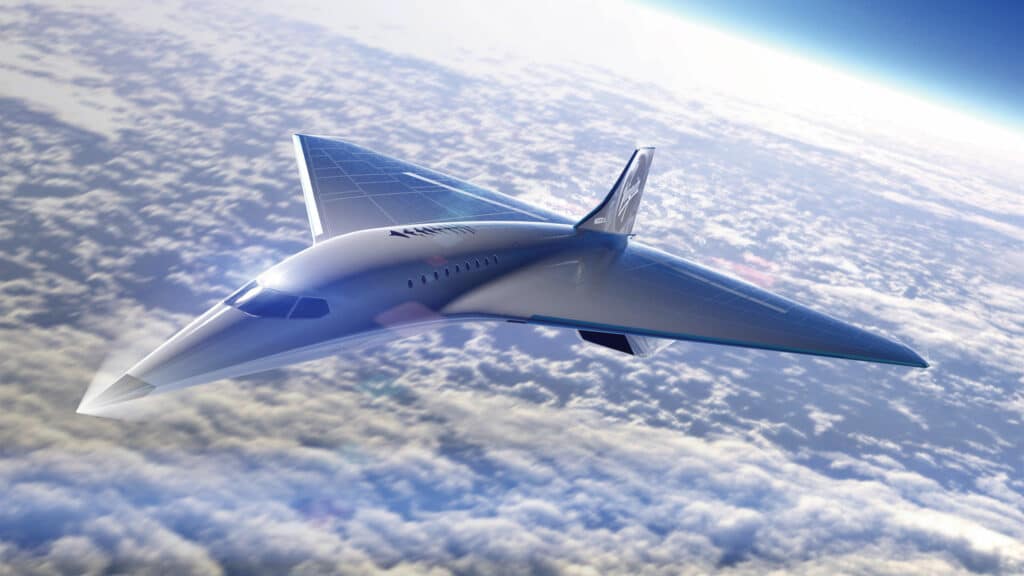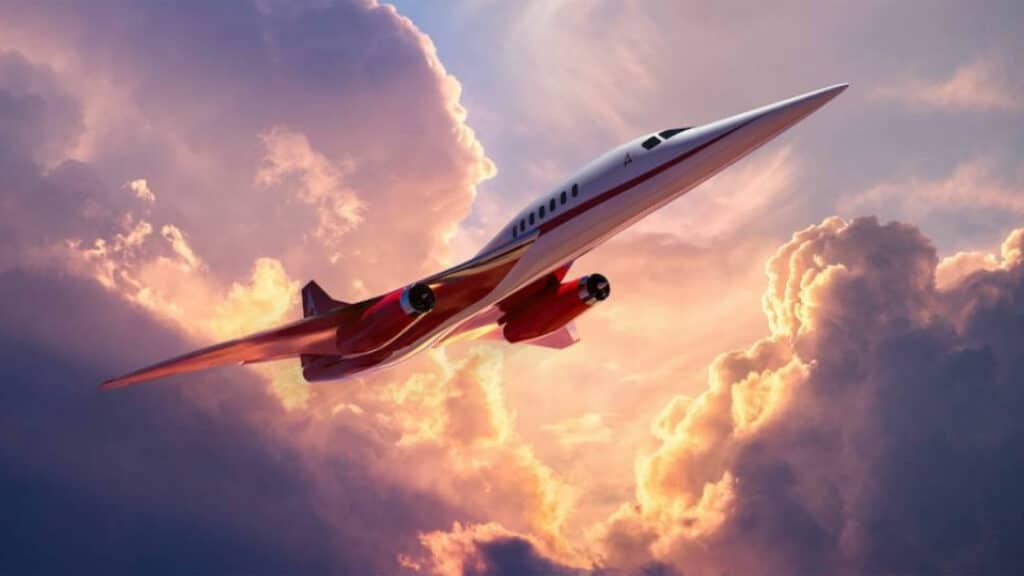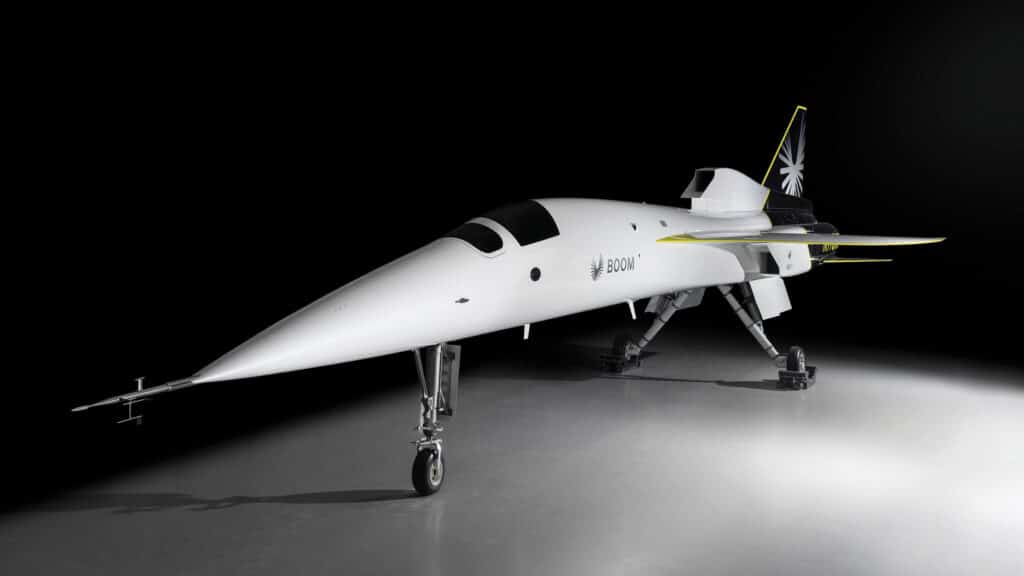New York to London in 2 Hours? Yes, Supersonic Passenger Aircraft Are Coming
The original Concorde supersonic passenger jet may have been retired in 2003, but the desire to dramatically reduce the travel time on treks like New York to Paris and Sydney to San Francisco lives on. Today, a number of companies are seeking to make supersonic travel safe, reliable and affordable.

One of the more well-known names among them is Richard Branson’s Virgin Galactic. Also a company that is leading the way in space tourism, Virgin hopes to have similar success in developing an aircraft that it says will be a Mach 3-certified delta-wing vehicle that can cruise at 60,000 feet and carry up to 19 people from London to New York in two hours rather than the 7.5 hours required for the trip today—or perhaps more impressively, from Sydney to London in four hours rather than 19.
Partnering With a Propulsion Leader
Branson’s company is working with Rolls-Royce to develop the engine propulsion technology for its supersonic jet. More widely recognised for its luxury cars, Rolls-Royce has extensive experience in advanced propulsion systems.
“We are excited to partner with Virgin Galactic and The Spaceship Company (TSC) to explore the future of sustainable high-speed flight,” said Rolls-Royce North America Chairman & CEO Tom Bell. “Rolls-Royce brings a unique history in high-speed propulsion, going back to the Concorde, and offers world-class technical capabilities to develop and field the advanced propulsion systems needed to power commercially available high-Mach travel.”
Virgin has announced the completion of Mission Concept Review and unveiled the initial design concept for its jet. The company is also working with NASA and the FAA on its designs as it seeks to make high-speed air travel a viable option for consumers.
Its goal is to develop an aircraft that is compatible with existing airport infrastructure and services, and that can take off and land like any other jet. One unique characteristic, however, is that Virgin is planning to use a new form of sustainable fuel.
While the company says it is making significant progress on the project, it has not given estimated dates for the jet to be operational or transporting passengers.

Other Companies Pursuing Supersonic Passenger Travel
Virgin Galactic is not alone in looking to enable supersonic travel, of course. Other companies are working toward that same goal. They include Boom Supersonic, Aerion Supersonic, Spike Aerospace and Boeing.
Boeing’s goal of a cruising speed of Mach 5 (3,836 miles per hour) is especially intriguing. That speed would make it the first “hypersonic” passenger jet—a term not as clear-cut as “supersonic” but that is commonly applied to objects traveling Mach 5 or faster.
Not as fast but likely to be operational sooner, Boom Supersonic’s XB-1 test aircraft will have a cruising speed of Mach 2.2. The company passed an important milestone in October 2020 when it completed the jet and began preparations for the vehicle’s first flight, which is expected to take place over a Mojave Desert testing ground in summer 2021. The single-seat XB-1 will help the company test design elements that will ultimately be used in its Overture jet, which will have a 65-passenger capacity.
Aerion’s aircraft at Mach 1.4 and Spike’s at Mach 1.6 don’t have proposed cruising speeds as high as the Overture or Boeing’s unnamed jet, but they will still get travellers to their destinations in a fraction of the time of conventional jets.
Another key to the success of supersonic passenger jets is reducing or eliminating the sonic boom that the faster of these aircraft will produce. The anger and frustration of people living near airports who objected to the noise was problematic for the Concorde. The answer for some manufacturers may be that pilots won’t accelerate to boom-producing speeds until the jet is at an altitude where the sound is reflected upward off a dense layer of atmosphere and is never heard on the ground.

Anywhere in the World in 3 Hours
Time will tell if supersonic travel, and later hypersonic travel, will be safe for consumers and profitable for airlines. But watching researchers and manufacturers pursue those objectives will certainly be interesting for aviation observers.
Aerion Chief Executive Officer Tom Vice has said that the company’s vision is ultimately to enable people to travel between any two airports on the planet within three hours. Couple that with the goal of Virgin Galactic and others to take tourists into space, and clearly the next few decades will be a period of unrivaled aviation and aerospace innovation.
Photos: Virgin Galactic, Aerion and Boom




